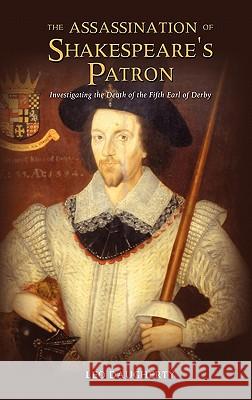The Assassination of Shakespeare's Patron: Investigating the Death of the Fifth Earl of Derby » książka
The Assassination of Shakespeare's Patron: Investigating the Death of the Fifth Earl of Derby
ISBN-13: 9781604977370 / Angielski / Twarda / 2011 / 374 str.
ord Ferdinando Stanley was the fifth earl of Derby, a leading claimant to the throne. Considered a man who had everything, he was also the patron of the company of players which was fortunate enough to include William Shakespeare. At the time, Shakespeare was an up-and-coming junior member who had just begun to write plays for them--plays which were already the talk of London. Lord Stanley was incalculably rich, having married one of the wealthiest heiresses in England. His home in Lancashire was called the "Northern Court" because of its grandness, surpassing any in England but (perhaps) the Queen's own. Then one day, April Fool's Day, 1594, he was reportedly approached by a witch (one of the famous legion of "Lancashire witches") and they engaged in brief conversation while strolling outside his largest palace, Lathom Hall. Four days later, he fell violently ill. For twelve days he lingered, while four of the best doctors in the country, including the famous Dr. John Case of Oxford, labored in vain to save him. Two of his retainers wrote gruesomely detailed accounts of the progress of his "diseases"--accounts that survive in manuscript today. When he died, Dr. Case was heard to murmur (as reported by Sir George Carey, the earl's brother-in-law): "Flat poisoning. And none other but." For months after his passing and interment, no one could get close enough to the family crypt to pay his or her respects because of an overwhelming stench that continued to emanate from his body. Who killed him and why? Historians started debating that question almost as soon as he died, and outraged gossip was to be heard everywhere in England. This book studies the death of Lord Derby within the immediate contexts of Elizabethan power politics, succession mania, passionate religious controversy, the records of prominent families in the North, and the cult of personality just then beginning to become a major factor in the nation's social history. The book's scope also includes subcultural contexts such as Elizabethan poetry (Lord Derby was a pastoral love poet, some of whose work survives), witchcraft, medicine, spy networks, and both approved and disapproved methods of political assassination (with poison being the most frowned upon because of its disreputable "Italianate" connotations). This book is the first to survey and analyze the nearly 420-year-old documentary record relating to the death of Lord Derby, including all relevant original manuscripts, some of which have remained unprinted until now. This is the first study to piece together all these fragmentary, disparate scraps of information to form a coherent narrative--a story not just of the assassination of one of the most prominent persons of the fascinating "Age of Elizabeth" but also of European power politics as a whole during the last decade of the sixteenth century. It is also the first to offer a solution to the "murder mystery" that is based on original documents (most of them being heated back-and-forth letters written on the spot to and from the principals, both immediately before and immediately after the assassination). This book will be of interest to all readers interested in Elizabethan history, literature, and politics, perhaps especially those who are interested in the dazzling major players of the age: Elizabeth, Essex, Lord Burghley, his son and successor Sir Robert Cecil, and the Stanleys of Lancashire--the latter so prominent in the early history plays of the young Shakespeare, who spun those plays in order to flatter his Stanley patrons.











